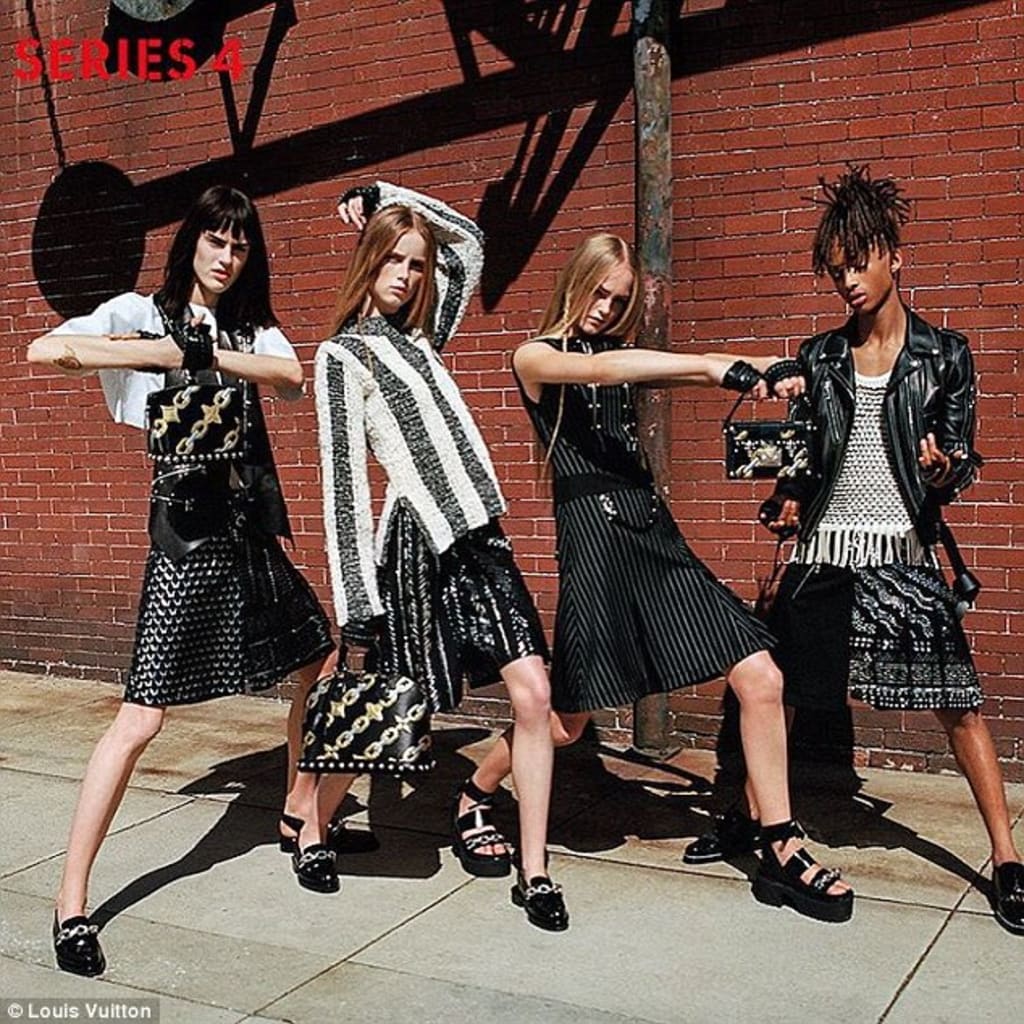Gender in the Fashion Industry
Everyone's tired of the gender roles pushed on humans, but what are we doing to fix it?

For so long, it wasn’t socially acceptable for girls to wear jeans. That seems ridiculous, does it not? The fashion industry and societal standards push these rules on us. Why is it that people who identify as male cannot wear a skirt or a dress?
Some clothing brands have already started to recognize this flaw and are trying to correct it, such as Louis Vuitton in 2016. They launched a clothing campaign that featured Jaden Smith and other women modeling traditional “women’s” clothing, such as skirts and dresses. Jaden Smith is taking great strides in the fashion industry by wearing these clothes. And guess what? He looks amazing in them.
Some clothing brands get the wrong idea also. Zara released an “un-gendered” clothing line which consisted of very plain, androgynous clothes: Sweatshirts and jeans, clothing that everyone already wears. This brand just pushed the idea that in order for genders to wear the same thing, it cannot be “too feminine” or “too masculine.” This clothing line got a lot of negative reviews just because they called it “ungendered.” If they called it “boring,” it probably wouldn’t have gotten bad backlash.
I can’t have this speech and not talk about Harry Styles. Like Jaden Smith, he is also using his fame in order to get the idea out there that fashion is not strictly male or female. He goes on stage and wears floral suits and blouses initially “made for women” but he is definitely breaking gender norms.
In Britain, there was a recent heatwave in which male students from Exeter’s ISCA Academy protested the school’s dress code about not being allowed to wear shorts. These students instead wore skirts borrowed from their sisters in “rebellion.” The academy, in the next year, gave the okay for men to wear shorts instead of just trousers. But the question is, why is it a rebellion anyway? Why is it not acceptable for men to wear skirts?
According to Vogue, the fashion industry is actually shifting towards gender fluidity, which is a good thing. Male models on the runway are wearing skirts, frilly blouses, and high heels. This kind of exposure is normalizing people wearing whatever they want to wear. In the spring/ summer 2018 menswear shows, they sent men down the catwalk in pleated skirts, mimicking the rebellion at Exeter’s ISCA Academy. The brand Gucci has been doing the same thing, making the change towards gender fluidity. Male models walk wearing long dresses and chunky heals.
There is also a problem with trans people who wear clothes of their preferred gender, but the clothes don’t always fit correctly. That’s why some companies such as Kirrin Finch are making clothes that are traditionally male fitted more to people with hips or larger chest.
Another problem the fashion industry has with gender is that fashion is known to be a “female” profession but it’s still ruled by males. It’s the issue that men are awarded praise and awards over women in the industry, despite fashion still being considered a feminine occupation.
According to statistics compiled in a quantitative study published in 2015 by Allyson Stokes, a sociologist at the University of Waterloo, between 1981–2013, 98 men have received an award from the CFDA, compared to only 29 women. But 80-90 percent of 2012 graduating students from top fashion programs at the Fashion Institute of Technology, Parsons School of Design and Ryerson University were women. Why is that? Well, studies show that because fashion is operating under circumstances of uncertainty and ambiguity to decide whether the outfit is great or not, critics often end up falling on stereotypes in order to make decisions.
Men in the fashion industry are described as independent, creative, and rational, while women are described as quiet, diminutive, calm, or unable to commit to the fashion industry because of their family. Women designers also are described to appeal to the everyday consumer. Words such as “comfortable” or “grounded” are used. But men are described as major artists, such as “soul of a poet” (Alber Elbaz). Calvin Klein is described as a “boundary crosser” even though he makes very simple underwear and sportswear.
This system in the fashion industry is very unfair for women and women of color. Fashion designers who are women of color are expected to design street clothes and hip-hop styles and when they don’t do that, it’s as if people don’t really understand it.
In the past, women weren’t allowed to wear jeans or pants because it was “too masculine.” Now it’s unacceptable for men to wear traditionally “women’s” clothing. Just like how it finally became the norm for women to wear pants or skirts, the fashion industry will change enough for it to become the norm for men to do the same. The fashion industry is actually very sexist, and some of it is just on accident because the patriarchy is so ingrained in our system that it’s hard to stray away. The only way to fix this is to talk about it. Make sure people know the problem and then we will be on our way to a brighter and equal future for men and women.






Comments
There are no comments for this story
Be the first to respond and start the conversation.